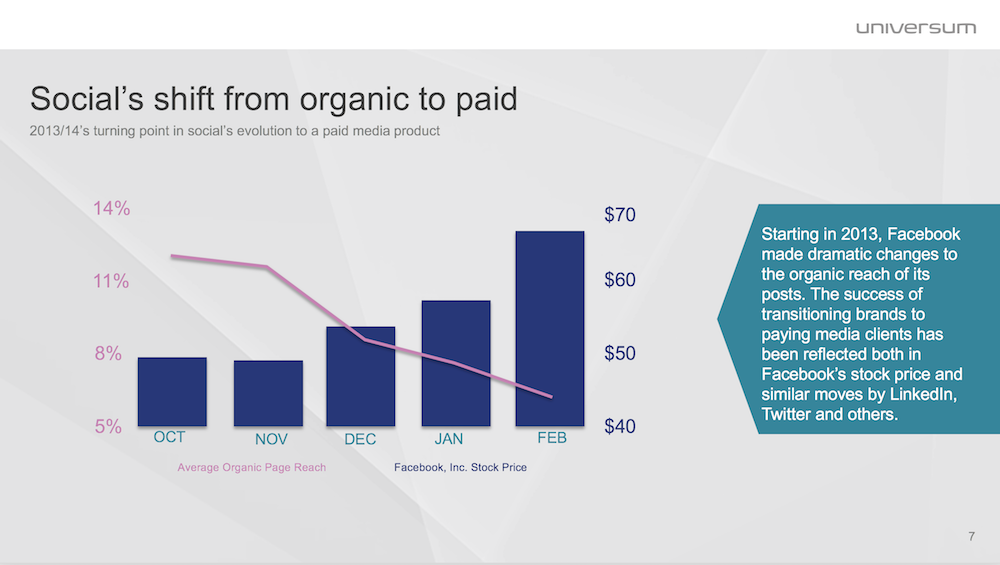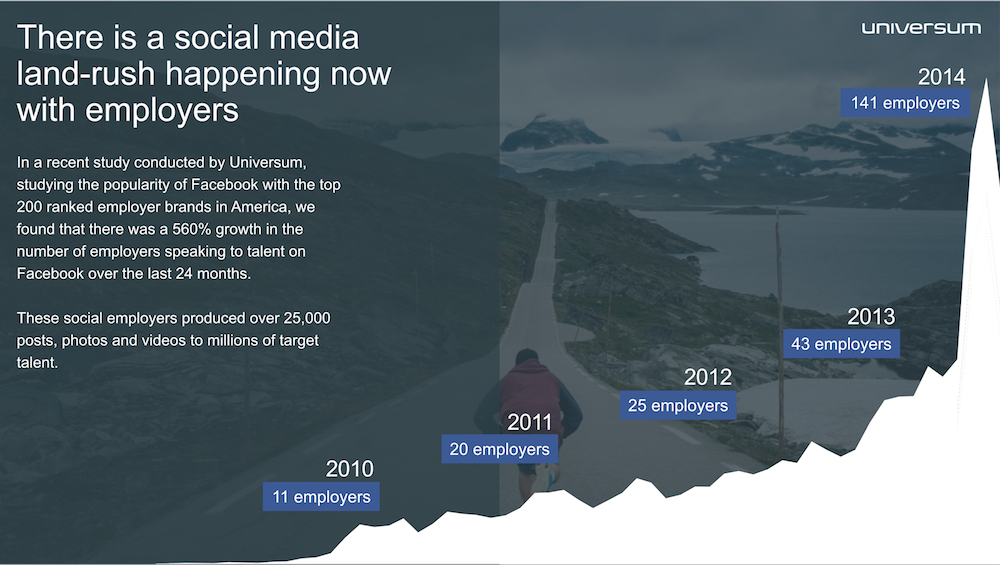Why Social Recruiting Is Actually Really Difficult

Everyone knows how to use social media, right? Hell, even grandma is on Facebook these days (with admittedly hilarious results, but god bless the woman — she’s trying).
It would seem, then, that every recruiter should have no problem when it comes to social recruiting. After all: if recruiters are using social media on the daily in their personal lives, they should be adept enough to use it in their professional lives, too.
This line of thinking seems sound, but David C. Brudenell, global vice president of product at Universum, says social recruiting isn’t that simple. There’s a big difference between how we use social media in our personal lives and how we use it to attract talent and build employer brands.
“As consumers interacting with social media, most [of us] are not thinking about the ROI for each post; we’re posting to keep our social networks updated, for vanity, for career progression, to chronicle our lives, and for a myriad of other reasons,” Brudenell explains. “For talent marketers, it’s a different story.”
How Social Media Stacks the Deck Against Employers
It’s pretty easy to be a consumer on social media — but it’s very hard to be a recruiter, Brudenell says.
On platforms like Facebook, users are inundated by the sheer volume of posts from their friends, the groups they join, and the pages they follow. Users simply cannot see everything that ends up in their feeds — there’s just too much.
“To ensure that users continue to come back to these platforms, friends and connections’ posts are prioritized over businesses’ posts,” says Brudenell.
That is, Facebook — and other social media platforms — have set up their systems so that people are far more likely to see posts from their friends than they are to see posts from employers trying to build their brands. Not only does prioritizing friends’ posts keep users happy — it also leads to increased profit for social media platforms.
“As businesses get less free access to eyeballs, they will pay for this access,” Brudenell explains. “For Facebook, as an example, the decrease in organic reach — how often employers’ posts are seen in users’ feeds — is inversely proportional to Facebook’s stock price.”

Image courtesy of Universum.
In other words: Facebook and other social media platforms have no interest in making it easy for employers to reach prospective talent. The harder it is for employers to brand themselves on social, the more money flows into social media platforms’ coffers.
Social recruiting differs from quotidian social media use in another important way, too: recruiters and employers on social are dealing with what Brudenell calls a “more educated and highly skeptical audience.”
Now that literal millions of businesses are on Facebook, LinkedIn, and the like, consumers and potential candidates have grown more aware of these business — and more able to spot their content and tune it out.
Employers work hard to create content that feels natural — marketing that doesn’t feel like marketing. But social media users can pick up on the smallest differences between organic, user-generated content and branded content — and when they do, they scroll right past the branded content.
“The massive success of social has created incredibly savvy consumers,” Brudenell says. “Creating compelling content for talent is harder than it has ever been.”
What to Do When Social Recruiting Becomes a Massive Challenge
Frankly speaking, social recruiting is hard work. Building an employer brand on social media requires more than just a team of recruiters with Facebook accounts; it requires investment, metrics, and training.
Universum found that “most organizations are under-investing in social recruiting and social employer branding” — though not for lack of trying.
“Social marketing for HR is still incredibly new for most,” Brudenell says. “Many employers that we work with are in the midst of figuring out where the social budget comes from. The challenge currently is not interest; what escapes most currently is creating new budgetary ‘social buckets’ of investment to fund these new social ideas.”

Image courtesy of Universum.
Similarly, Universum also found that relatively few organizations are actually measuring social media effectiveness. Burdenell says that, given how new social talent marketing is to most employers, it’s “not surprising that most are not measuring effectiveness.” But, Brudenell adds, tracking social metrics is incredibly important — and he has a few tips on the kinds of KPIs that employers should be tracking.
“What’s most important to measure is conversions — the talent that applies to jobs via social channels,” Brudenell says. “This is the ultimate measure of success, as this can be linked to other, more traditional metrics like time-to-hire, cost-per-hire, and tenure.”
Burdenell says that employers that are just starting out in the social game should focus mainly on tracking engagement.
“Engagement goes beyond ‘likes’ and considers the other, more meaningful interactions with talent, like comments and shares,” Burdenell says. “It’s these metrics that will show that your audience is curated, as well as engaged.”
Universum’s study recommends that, in order to improve their social recruiting and branding efforts, employers should think about creating “Social Media Centers of Excellence,” which Burdenell explains as such:
“Typically, this is a charter group with one or more members from HR, marketing, corporate relations, and public relations. Sometimes, external agencies are also invited … to share best practices and ideas. This center crystallizes the common [social media] goals for the group, which brings clarity to activities, and also highlights each divisions’ unique needs. These needs are heard by all participants, which unearths new ideas and builds empathy for campaign plans and decisions.”
Through a social media center of excellence, an employer can define its voice and tone on social, and it can create a collaborative, interdepartmental approach to social media strategies. To succeed in this era of savvy consumers and unfriendly social media platforms, employers may have no other choice but to invest in such centers.

